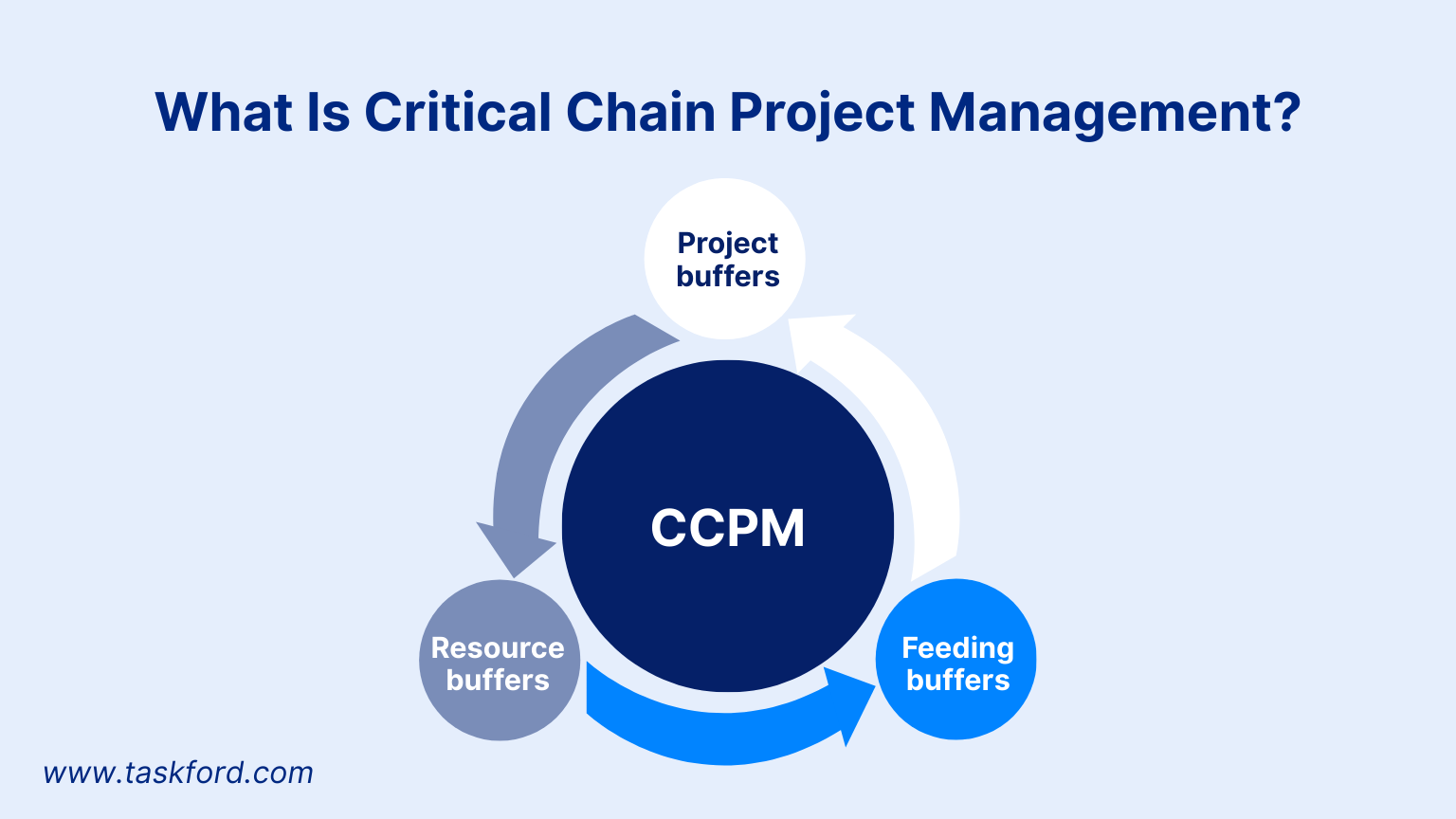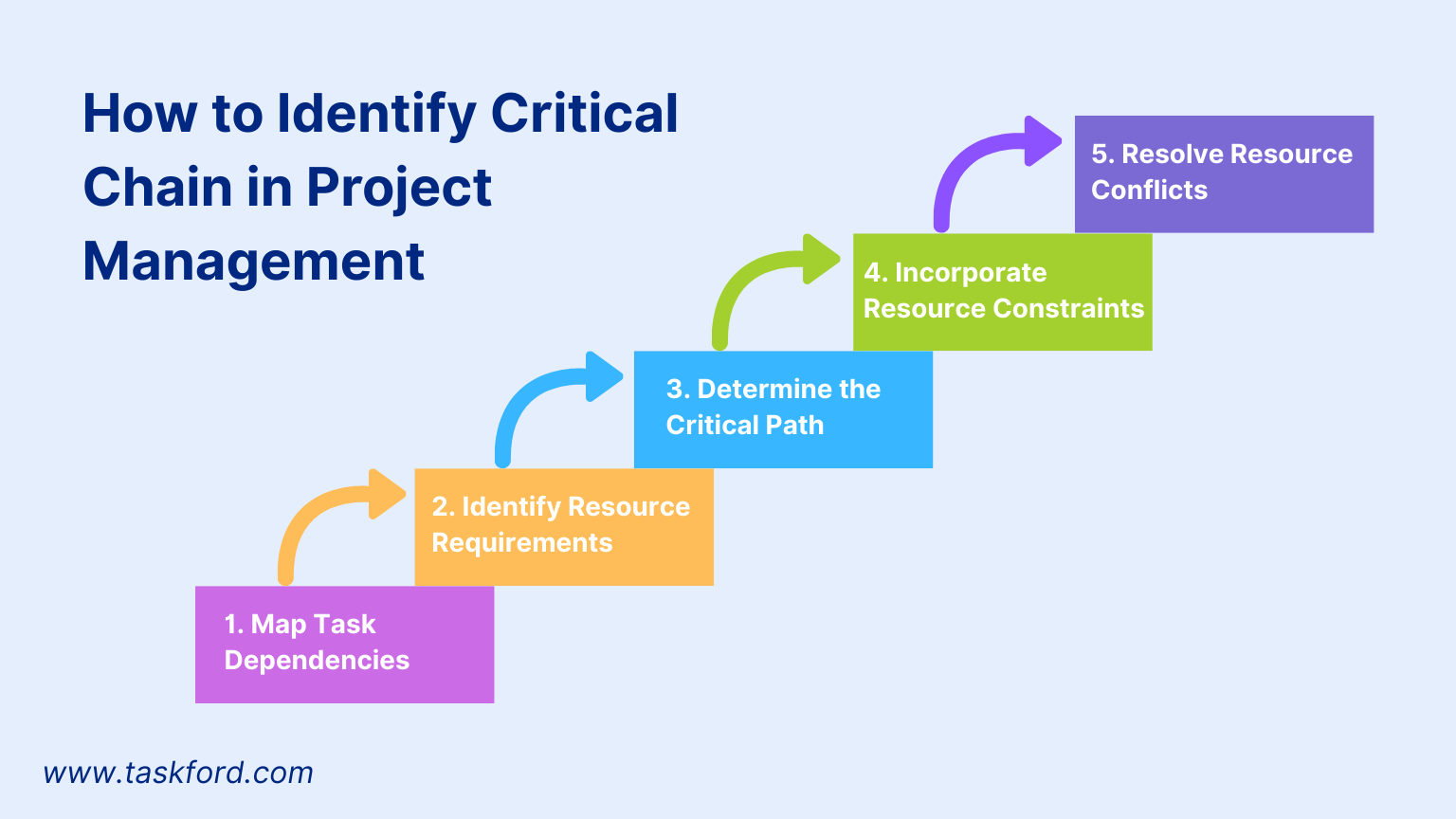Critical Chain Project Management: What It Is and How It Differs from Critical Path
Discover Critical Chain Project Management (CCPM) & how it differs from Critical Path Method (CPM). Choose the right method for your projects.
Project management methodologies can make or break a project’s success. Among the many approaches, Critical Chain Project Management (CCPM) and the Critical Path Method (CPM) stand out as two widely discussed techniques. While both aim to deliver projects on time, they differ significantly in their approach, focus, and execution. This article explains what CCPM is, how it contrasts with CPM, and offers practical guidance for project managers looking to apply these methods effectively.
What Is Critical Chain Project Management?
Critical Chain Project Management, developed by Eliyahu M. Goldratt in the 1990s, is a methodology rooted in the Theory of Constraints. It focuses on managing resource constraints and uncertainties to deliver projects faster and more reliably. Unlike traditional methods that prioritize task completion dates, CCPM emphasizes the critical chain - the longest sequence of dependent tasks when accounting for resource availability.
CCPM assumes that projects face inevitable uncertainties, such as delays or resource shortages. To address this, it uses aggressive task estimates (typically at 50% probability of completion) and aggregates safety time into strategic buffers. These buffers - project, feeding, and resource buffers - absorb delays and protect the project timeline. By discouraging multitasking and focusing teams on critical tasks, CCPM can reduce project durations by 10-50% compared to traditional methods, based on case studies in industries like IT and manufacturing.

Key Features of CCPM
- Critical Chain: The sequence of tasks that determines the project’s duration, factoring in both task dependencies and resource constraints.
- Buffer Management: Safety time is removed from individual tasks and pooled into buffers placed at key points, such as the end of the critical chain (project buffer) or where non-critical tasks feed into it (feeding buffer).
- No Multitasking: Team members focus on one task at a time to avoid inefficiencies caused by switching between tasks.
- Progress Tracking: Project health is monitored by tracking buffer consumption, often using visual tools like fever charts, rather than individual task deadlines.
For project managers new to these concepts, understanding project management terms can provide a solid foundation for grasping CCPM’s unique approach.
How to Identify Critical Chain in Project Management
Identifying the critical chain is the foundation of Critical Chain Project Management. Unlike the critical path, which only considers task dependencies, the critical chain accounts for both dependencies and resource constraints. Here’s a step-by-step guide to pinpointing the critical chain in your project:

1. Map Task Dependencies
Start by listing all project tasks and their dependencies, similar to creating a Critical Path Method in Project Management. For example, in a software project, coding cannot begin until requirements are finalized. Use a network diagram or Gantt Chart to visualize these relationships.
2. Identify Resource Requirements
For each task, note the resources needed, such as specific team members, equipment, or software licenses. Pay attention to limited resources (e.g., a single senior engineer or a specialized machine). Document resource availability, including working hours or capacity constraints, to understand potential bottlenecks.
3. Determine the Critical Path (Ignoring Resources)
Calculate the longest sequence of dependent tasks assuming unlimited resources. For instance, in a construction project, the critical path might include foundation, framing, and roofing, totaling 30 days.
4. Incorporate Resource Constraints
Adjust the critical path by factoring in resource availability. If the senior engineer needed for coding is also required for testing, schedule these tasks sequentially to avoid conflicts. This adjusted sequence becomes the critical chain. For example, if coding and testing depend on the same engineer, the critical chain might extend the project duration to 35 days due to resource limitations.
5. Resolve Resource Conflicts
If multiple tasks compete for the same resource, prioritize the task on the longest path (the one most likely to delay the project). Delay non-critical tasks or assign alternative resources if possible. This process, called resource leveling, ensures the critical chain reflects real-world constraints.
Practical Tip: Start tasks as late as possible (just-in-time scheduling) to minimize work-in-progress and reduce the risk of resource conflicts. This aligns with CCPM’s goal of focusing effort on critical tasks.
Understanding the Critical Path Method
The Critical Path Method, a cornerstone of traditional project management, focuses on identifying the longest sequence of dependent tasks - known as the critical path - that determines the project’s minimum duration. Developed in the 1950s, CPM assumes resources are unlimited and prioritizes task dependencies and scheduling. Each task includes a safety margin in its duration estimate to account for potential delays, and the project timeline is built around completing these tasks in sequence.
CPM is widely used in industries like construction, where task dependencies (e.g., pouring a foundation before framing) are clear, and resource constraints are less of a concern. Progress is tracked by monitoring whether individual tasks are completed on time, and any delay in a critical path task directly extends the project’s duration.
To dive deeper into CPM, check out our guide on the Critical Path Method in Project Management.
How Critical Chain Project Management (CCPM) Differs from Critical Path Method (CPM)

While both CCPM and CPM aim to deliver projects on time, their approaches diverge in several key areas. Understanding these differences helps project managers choose the right methodology for their projects.
| Aspect | Critical Chain Project Management (CCPM) | Critical Path Method (CPM) |
|---|---|---|
| Focus | Prioritizes resource constraints and task dependencies, preventing bottlenecks (e.g., scheduling around one developer’s availability). | Focuses only on task dependencies, assuming unlimited resources, risking overallocation. |
| Time Estimation | Uses aggressive task estimates (50% probability) to remove hidden safety margins. Safety time is pooled into buffers (e.g., project buffer at 50% of critical chain duration) to create leaner schedules. | Builds safety time into each task’s estimate, often inflating schedules (e.g., a 5-day task includes a 2-day safety margin, which may be consumed due to Parkinson’s Law). |
| Resource Management | Discourages multitasking, requiring focus on one task at a time to reduce inefficiencies. | Does not address multitasking, assuming unlimited resources, which may cause delays if resources are stretched. |
| Progress Monitoring | Tracks project health via buffer consumption (e.g., if 10 of 20 buffer days are used halfway through, the project is at risk). | Monitors individual task completion. Delays in critical path tasks directly extend the project timeline, offering less flexibility. |
| Handling Uncertainty | Uses buffers (project, feeding, resource) to absorb delays, making it adaptable to uncertainties like resource shortages or task overruns. | Less flexible, as critical task delays directly impact the project end date unless additional resources are allocated. |
This comparison highlights why CCPM is ideal for resource-constrained projects, while CPM suits task-driven projects with clear dependencies. To explore foundational concepts behind these methods, see our article on What is Project Management.
When to Use Critical Chain Project Management (CCPM) vs. Critical Path Method (CPM)
Choosing between CCPM and CPM depends on your project’s needs:
- Use CCPM for projects with limited resources or high uncertainty, such as software development, product launches, or R&D. It’s ideal when multitasking is a risk or when teams need clear priorities.
- Use CPM for projects with well-defined task sequences and minimal resource constraints, such as construction or event planning, where dependencies are the primary concern.
For hybrid projects, you can combine elements of both. For instance, use CPM to map task dependencies and CCPM to manage resource allocation and buffers.
Conclusion
Critical Chain Project Management offers a powerful alternative to the Critical Path Method by focusing on resource constraints, lean scheduling, and buffer management. While CPM excels in task-driven projects with clear dependencies, CCPM shines in environments with limited resources or high uncertainty. By understanding their differences—resource focus vs. task focus, aggressive estimates vs. padded schedules, and buffer tracking vs. task monitoring—project managers can choose the right approach for their needs.
Subscribe for Expert Tips
Unlock expert insights and stay ahead with TaskFord. Sign up now to receive valuable tips, strategies, and updates directly in your inbox.